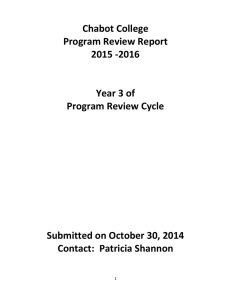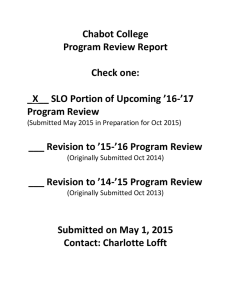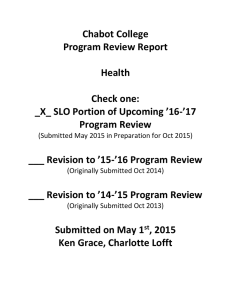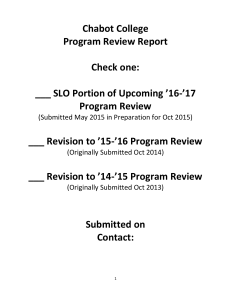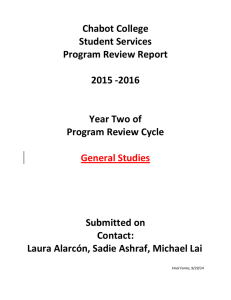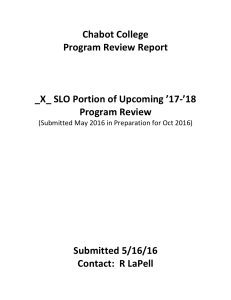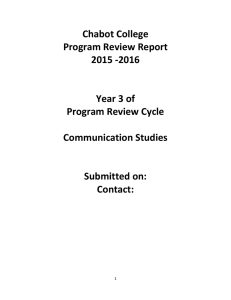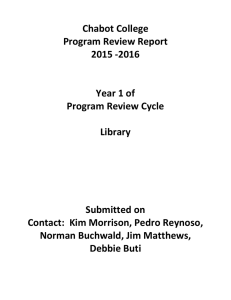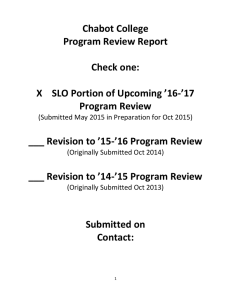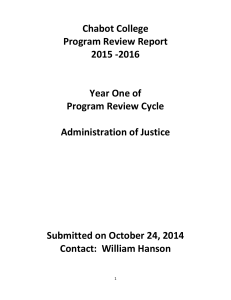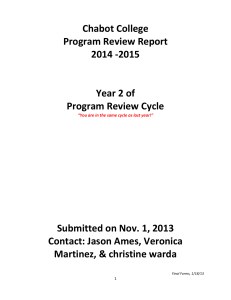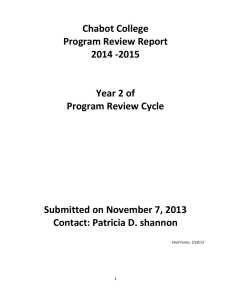Course-Level Outcome (CLO) 2
advertisement
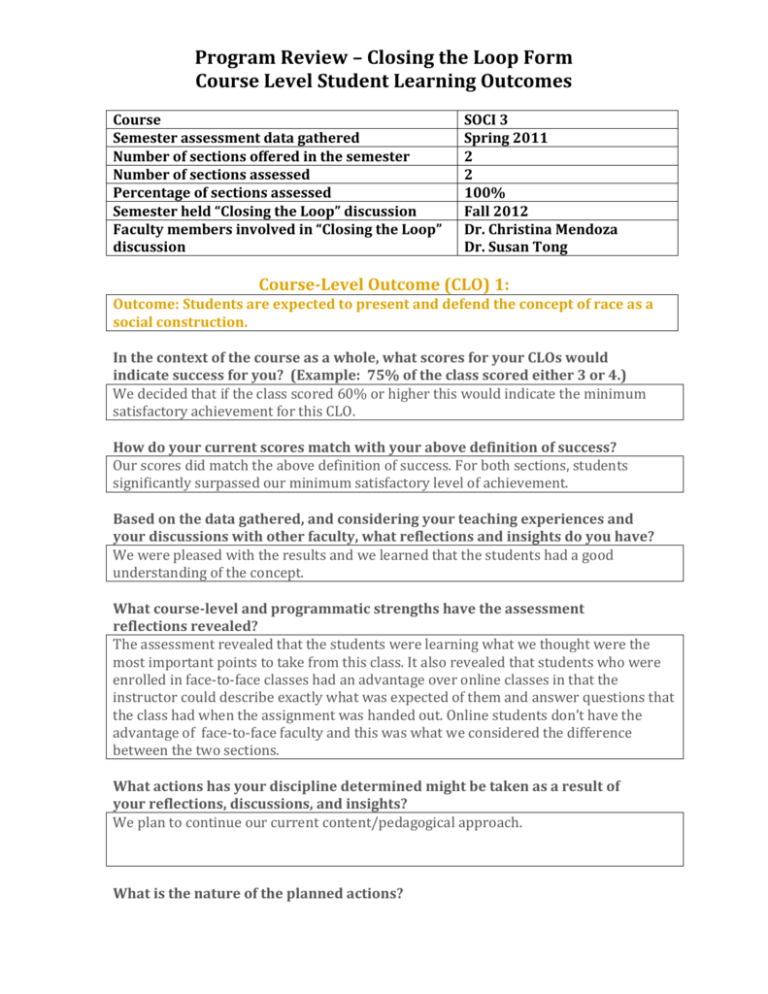
Program Review – Closing the Loop Form Course Level Student Learning Outcomes Course Semester assessment data gathered Number of sections offered in the semester Number of sections assessed Percentage of sections assessed Semester held “Closing the Loop” discussion Faculty members involved in “Closing the Loop” discussion SOCI 3 Spring 2011 2 2 100% Fall 2012 Dr. Christina Mendoza Dr. Susan Tong Course-Level Outcome (CLO) 1: Outcome: Students are expected to present and defend the concept of race as a social construction. In the context of the course as a whole, what scores for your CLOs would indicate success for you? (Example: 75% of the class scored either 3 or 4.) We decided that if the class scored 60% or higher this would indicate the minimum satisfactory achievement for this CLO. How do your current scores match with your above definition of success? Our scores did match the above definition of success. For both sections, students significantly surpassed our minimum satisfactory level of achievement. Based on the data gathered, and considering your teaching experiences and your discussions with other faculty, what reflections and insights do you have? We were pleased with the results and we learned that the students had a good understanding of the concept. What course-level and programmatic strengths have the assessment reflections revealed? The assessment revealed that the students were learning what we thought were the most important points to take from this class. It also revealed that students who were enrolled in face-to-face classes had an advantage over online classes in that the instructor could describe exactly what was expected of them and answer questions that the class had when the assignment was handed out. Online students don’t have the advantage of face-to-face faculty and this was what we considered the difference between the two sections. What actions has your discipline determined might be taken as a result of your reflections, discussions, and insights? We plan to continue our current content/pedagogical approach. What is the nature of the planned actions? Curricular X Pedagogical X Resource based Change to CLO or rubric Change to assessment methods Other: _______________________________________________________________________________ Course-Level Outcome (CLO) 2: Outcome: Students are expected to distinguish between cultural assimilation (acculturation), structural assimilation, and pluralism across different cultures. In the context of the course as a whole, what scores for your CLOs would indicate success for you? (Example: 75% of the class scored either 3 or 4.) We decided that if the class scored 70% or higher this would indicate the minimum satisfactory achievement for this CLO. How do your current scores match with your above definition of success? For both sections, students met our minimum satisfactory level of achievement. Based on the data gathered, and considering your teaching experiences and your discussions with other faculty, what reflections and insights do you have? We were pleased with the results and we learned that the students had a good understanding of the concept. What course-level and programmatic strengths have the assessment reflections revealed? It provided evidence that students in this course are learning the important course concepts. What actions has your discipline determined might be taken as a result of your reflections, discussions, and insights? For online courses, students would benefit from more content/application of the important course concepts. What is the nature of the planned actions? Curricular X Pedagogical X Resource based Change to CLO or rubric Change to assessment methods Other: _______________________________________________________________________________ Course-Level Outcome (CLO) 3: Outcome: Students are expected to compare and contrast the concepts of race and ethnicity, illustrating various contemporary arguments on these as evolving concepts. In the context of the course as a whole, what scores for your CLOs would indicate success for you? (Example: 75% of the class scored either 3 or 4.) We decided that if the class scored 60% or higher this would indicate the minimum satisfactory achievement for this CLO. How do your current scores match with your above definition of success? For both sections, students met our minimum satisfactory level of achievement. Based on the data gathered, and considering your teaching experiences and your discussions with other faculty, what reflections and insights do you have? For online classes, students would benefit from more content/application of the important core concepts. What course-level and programmatic strengths have the assessment reflections revealed? It provided evidence that students in this course are learning the important course concepts. What actions has your discipline determined might be taken as a result of your reflections, discussions, and insights? We plan to continue our current content/pedagogical approach. What is the nature of the planned actions? Curricular X Pedagogical X Resource based Change to CLO or rubric Change to assessment methods Other: _______________________________________________________________________________ Course-Level Outcome (CLO) 4: Outcome: In the context of the course as a whole, what scores for your CLOs would indicate success for you? (Example: 75% of the class scored either 3 or 4.) How do your current scores match with your above definition of success? Based on the data gathered, and considering your teaching experiences and your discussions with other faculty, what reflections and insights do you have? What course-level and programmatic strengths have the assessment reflections revealed? What actions has your discipline determined might be taken as a result of your reflections, discussions, and insights? What is the nature of the planned actions? Curricular Pedagogical Resource based Change to CLO or rubric Change to assessment methods Other: _______________________________________________________________________________
